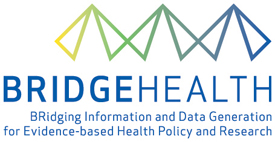Integrated information on injuries
Expand and integrate injury data into health information.
The Injury Surveillance Platform, i.e. a network of national European Injury Data Base (IDB) centres, fulfil a core role in implementing a programme of continuous improvement in injury data gathering within European countries. Data are currently being provided from 22 countries and this is expected to expand to at least 30 countries. The objective of the Injury Surveillance Platform within BRIDGE Health is to further integrate the IDB standardised methodology and classification into all relevant primary and secondary care health information systems.
Capitalising on the capacity and expertise developed under previous IDB-related projects, the Injury Surveillance Platform will continue to maintain the quality of injury data delivery by countries through bi-lateral coaching, regular feedback to partners in countries, guidance on use and organising a series of 3 two-days training events. Each country’s National Database Administrator will securely upload anonymised data files to Swansea University where they are quality assured with a feedback loop to suppliers to correct any erroneous data. Data files delivered will be processed and after quality assurance made available on the web and published in print. Data files are forwarded to Eurostat and also analysed by the research team with results also produced on the EuroSafe website.
Country partners will be in particular assisted in expanding their data capture scope to all causes of injuries; enhance informative value by adding cost and inequality estimates to their national figures; and to optimise synergy with other health datasets.
The actions of the Injury Surveillance Platform within the BRIDGE-Health consortium will also help to enhance the use of up to date injury data at EU-level for bench making policies relevant for the safety of citizens in Europe and maximise synergies with existing health information repositories.
The main contributers to this research field are:
 |  |

